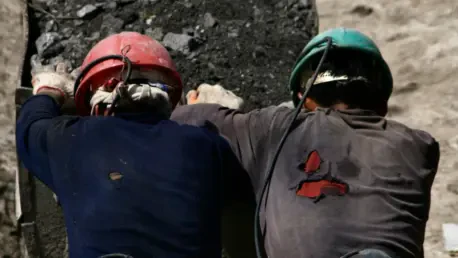The coal mining industry stands at a crossroads, facing a pivotal discussion regarding the balance between the economic benefits provided by this age-old industry and the health risks posed to those who toil within it. In an era marked by technological advancements and regulatory shifts, there is a critical need to assess the current landscape and the implications for miners’ health and livelihoods. This discourse is fueled by recent instances where industry growth has clashed with health safety measures, especially concerning respiratory diseases like black lung, compelling stakeholders to reconsider their strategies moving forward.
Overview of the Coal Mining Industry
Coal mining plays an integral role in the global energy sector, contributing substantially to economic growth and energy security. The industry encompasses the extraction, processing, and delivery of this key fuel source, employing thousands of individuals and supporting numerous subsidiary industries. In recent years, technological innovations have transformed mining techniques and increased productivity. However, these advances have also come with increased scrutiny regarding their impact on miner health and environmental integrity. Notable players in the mining sector continue to influence policy through lobbying, often leading to shifts in regulatory landscapes. These regulations vary significantly from one jurisdiction to another, affecting safety protocols, environmental compliance, and operational practices.
Balancing Health Risks and Economic Gain
Trends and Challenges in Coal Miner Safety
The resurgence of black lung disease, particularly among young miners, highlights ongoing challenges in safeguarding coal miner health. Despite historical regulations to mitigate dust exposure, the incidence of this debilitating condition has risen, driven by prolonged silica exposure during the mining process. Emerging technologies aim to monitor and reduce dust levels, yet economic pressures can hinder widespread adoption. Industry stakeholders are thus challenged to balance the immediate benefits of cost-cutting with the long-term health implications for their workforce.
Economic Impacts and Employment Statistics
Coal mining is a substantial economic driver, with data highlighting its role in supporting jobs and regional development. Despite fluctuations in market demand and environmental regulations, the sector projects steady growth. However, the industry’s economic benefits must be weighed against the health costs, particularly as increased cases of black lung underscore the potential long-term financial burdens. Forward-looking analyses suggest that addressing miner safety could lead to sustainable economic gain, ensuring miners’ health while preserving jobs.
Navigating Industry Complexities
The convergence of technology and regulation poses both opportunities and challenges. While innovations such as automated machinery and real-time monitoring systems promise safer mines, the implementation of such technologies is often met with regulatory hurdles. Moreover, inconsistent safety standards across regions complicate compliance efforts, necessitating comprehensive industry-wide strategies that cater to diverse operational contexts while elevating miner safety levels.
Regulatory Landscape and Its Impact
The regulatory environment has undergone significant changes, with major implications for coal miner safety. The relaxation of crucial safety rules during certain administrative periods aimed at reviving the coal industry, yet simultaneously sparked health concerns. Conversely, subsequent regulatory tightening has aimed at reinstating higher safety standards. Compliance with such evolving regulations requires mining companies to invest in safety training, equipment, and monitoring systems, highlighting the critical role of federal oversight in ensuring a balanced approach to miner health and industry viability.
Future Directions in Coal Mining
The coal mining industry is on the cusp of transformative change as it grapples with technological advancements, market dynamics, and shifting consumer preferences. Future trends point toward increased automation and greener practices as potential disruptors. Growth areas may include cleaner coal technologies and expanded international markets. However, the industry’s future trajectory will largely depend on its ability to navigate regulatory landscapes and prioritize miner welfare alongside economic goals.
Conclusion and Recommendations
In concluding the analysis, it became clear that the coal mining industry faces a multifaceted set of challenges and opportunities. Economic gains must be balanced with the pressing need for robust safety standards to prevent health risks like black lung disease. Ensuring miner safety requires integrated efforts among industry players, policymakers, and health advocates. It is recommended that investments in new safety technologies and comprehensive training programs be prioritized to enhance occupational safety. Furthermore, regulatory clarity and transparency will aid in aligning economic priorities with health imperatives, ensuring sustainable industry growth that benefits both the economy and miners’ well-being. By addressing these critical areas, the coal mining industry can strive for a future that accommodates prosperity without compromising health and safety.









